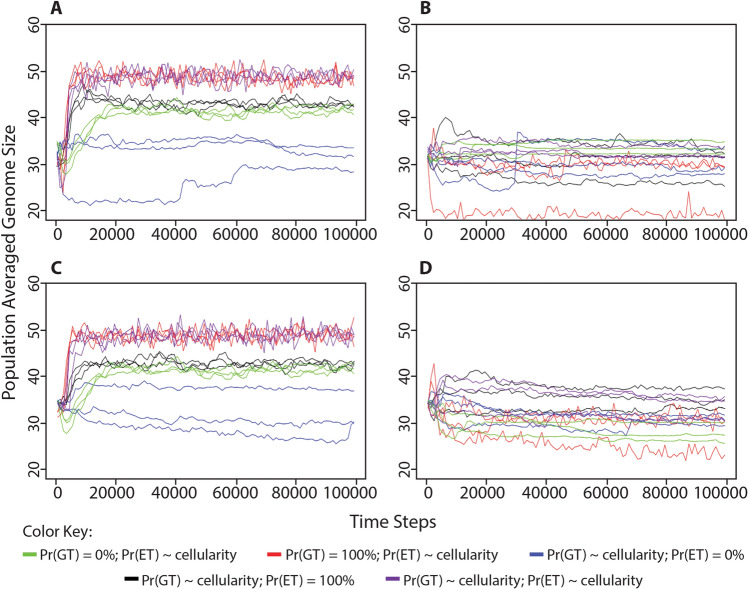Fig. 12.
Change in population-averaged genome lengths in different conditions of environmental processing energy when either random gene transfer or energy transfer is no longer a consequence of cellularity. We performed the simulations described in Figs. 2 and 4. a Organisms began each simulation with 0 cellularity genes (i.e., 0% cellular impermeability) in an environment with unlimited food puzzles and processing energy. b Organisms began each simulation with 0 cellularity genes (i.e., 0% cellular impermeability) in an environment with unlimited food puzzles, but a limited number of processing energy parcels in the environment, equivalent to 25% the maximum population capacity. c Organisms began each simulation with 3 cellularity genes (i.e., 87.5% cellular impermeability) in an environment with unlimited food puzzles and processing energy. d Organisms began each simulation with 3 cellularity genes (i.e., 87.5% cellular impermeability) in an environment with unlimited food puzzles, but a limited number of processing energy parcels in the environment, equivalent to 25% the maximum population capacity. The consequences of cellularity are manipulated as such: Green = probability of gene transfer is set to 0%; Red = probability of gene transfer is set to 100%; Blue = probability of energy transfer is set to 0%; Black = probability of energy transfer is set to 100%; Purple = no manipulation. All simulations were performed with a maximum population size of 1000

